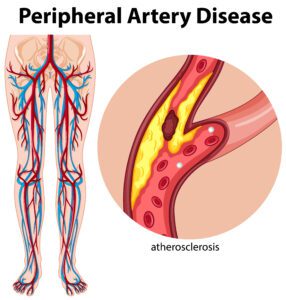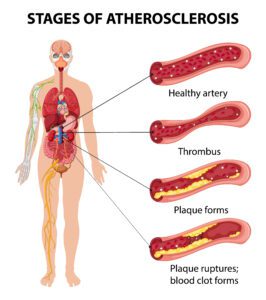Risk factors for PAD:-
What increases the risk of PAD?
- Smoking
- High blood pressure
- Atherosclerosis
- Diabetes
- High cholesterol
- Being over 60
Both men and women can have PAD, but African Americans face higher risks. Hispanics might have similar or slightly higher rates than non-Hispanic whites. Over 6.5 million Americans aged 40 and older have PAD.
Some artery problems can look like PAD, and not all PAD cases are because of atherosclerosis.
Having PAD makes you more likely to get coronary artery and cerebrovascular diseases, which could lead to heart attacks or strokes.

signs and symptoms of PAD?
Stages of peripheral artery disease:-
Doctors use two systems, Fontaine and Rutherford, to tell how advanced your PAD is. In Fontaine’s stages:
- Stage I: No symptoms (asymptomatic).
- Stage IIa: Some leg pain during exercise (mild claudication).
- Stage IIb: More intense leg pain during exercise (moderate to severe claudication).
- Stage III: Leg pain while resting due to reduced blood flow (ischemic rest pain).
- Stage IV: Ulcers or gangrene.
Best sleeping position for peripheral artery disease:-
For better sleep with peripheral artery disease (PAD), consider these positions:
- Leg Up: Lie on your back and raise your legs slightly using a pillow under your feet. It helps blood flow back to your heart and reduces swelling.
- Side Snooze: If back sleeping is uncomfortable, try sleeping on your side with a pillow between your knees. This keeps your hips and spine aligned.
- Be Gentle: Whichever position you choose, avoid putting too much pressure on your affected leg. This prevents discomfort and keeps blood flowing well.
- Expert Advice: Talk to your doctor for personalized suggestions based on your condition and health.
Remember, finding a comfy sleeping position for a PAD varies for everyone. Aim for comfort and better blood flow for a restful sleep.


